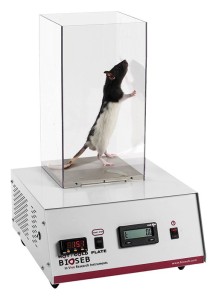Authors
V. Matos-Cruz, E.R. Schneider, M. Mastrotto, D.K. Merriman, S.N. Bagriantsev, E.O. Gracheva
Lab
Yale University School of Medicine, New Haven, Connecticut, USA
Journal
Cell Reports
Abstract
Thirteen-lined ground squirrels and Syrian hamsters are known for their ability to withstand cold during hibernation. We found that hibernators exhibit cold tolerance even in the active state. Imaging and electrophysiology of squirrel somatosensory neurons reveal a decrease in cold sensitivity of TRPM8-expressing cells. Characterization of squirrel and hamster TRPM8 showed that the channels are chemically activated but exhibit poor activation by cold. Cold sensitivity can be re-introduced into squirrel and hamster TRPM8 by transferring the transmembrane domain from the cold sensitive rat ortholog. The same can be achieved in squirrel TRPM8 by mutating only six amino acids. Reciprocal mutations suppress cold sensitivity of the rat ortholog, supporting functional significance of these residues. Our results suggest that ground squirrels and hamsters exhibit reduced cold sensitivity, partially due to modifications in the transmembrane domain of TRPM8. Our study reveals molecular adaptations that accompany cold tolerance in two species of mammalian hibernators.
BIOSEB Instruments Used
Cold Hot Plate Test (BIO-CHP)
Source :
http://www.cell.com/cell-reports/fulltext/S2211-1247(17)31750-3

 Douleur - Allodynie/Hyperalgésie Thermique
Douleur - Allodynie/Hyperalgésie Thermique Douleur - Spontanée - Déficit de Posture
Douleur - Spontanée - Déficit de Posture Douleur - Allodynie/Hyperalgésie Mécanique
Douleur - Allodynie/Hyperalgésie Mécanique Apprentissage/Mémoire - Attention - Addiction
Apprentissage/Mémoire - Attention - Addiction Physiologie & Recherche Respiratoire
Physiologie & Recherche Respiratoire




































 Douleur
Douleur Système Nerveux Central (SNC)
Système Nerveux Central (SNC)  Neurodégénérescence
Neurodégénérescence Système sensoriel
Système sensoriel Système moteur
Système moteur Troubles de l'humeur
Troubles de l'humeur Autres pathologies
Autres pathologies Système musculaire
Système musculaire Articulations
Articulations Métabolisme
Métabolisme Thématiques transversales
Thématiques transversales Congrès & Meetings
Congrès & Meetings 